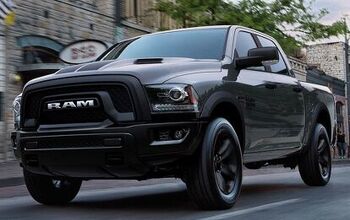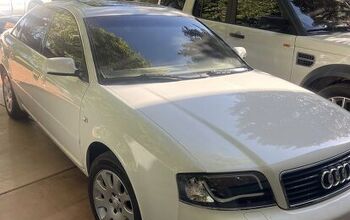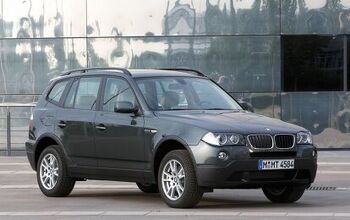Enthusiast Groups Unsure How to Best Handle Crash Avoidance Technology on Track Day

For the most part, crash avoidance and driver assistance technology is a welcome addition addition to the automotive landscape. While they can be a little invasive sometimes, they’re usually doing what they’re supposed to and helping to save the lives of drivers who may have had a momentary lapse in judgment or focus. However, there is a lot of worry over how lane assistance or emergency braking software will behave when you bring a streetcar to the track.
Several chapters of the BMW Car Club of America and the Porsche Club of America have already decided to forbid any vehicle equipped with aids. The fear is that track day organizers or instructors could be found liable if a car suddenly jerks right when it approaches the apex of a corner or suddenly decelerate when in close proximity to other vehicles. A driver might be caught off-guard if a car unexpectedly takes over and be unsure how to mitigate inputs they were unprepared for.
The bottom line is that newer cars are finding themselves in danger of being banned wholesale, and that’s just not going to work if track days are to continue in the years to come.
Of course, this is just one chapter. The BMWCCA’s overall stance is a little different and has been working with BMW of North America to address the issue. In an earlier discussion with Road & Track the automaker made it clear that, while driving aids can be disabled, “Most advanced driver aids like lane departure warning and blind spot detection do not affect the ability of the driver to control the car on-track at high speed. In addition the systems can be shut off so that they are also not a distraction to a student.”
Meanwhile, BMWCCA’s national driving events chairman Jack Joyner has suggested this is much ado about nothing. “As I understand it, these systems can be turned off, and that might be all we need,” he said. “If I have heard correctly, people were freaking out over ABS when it was introduced too. I would ask the newer car owners not to panic, as we will be having a call or two on this subject over the next few days.”
[Image: BMWCCA]

A staunch consumer advocate tracking industry trends and regulation. Before joining TTAC, Matt spent a decade working for marketing and research firms based in NYC. Clients included several of the world’s largest automakers, global tire brands, and aftermarket part suppliers. Dissatisfied with the corporate world and resentful of having to wear suits everyday, he pivoted to writing about cars. Since then, that man has become an ardent supporter of the right-to-repair movement, been interviewed on the auto industry by national radio broadcasts, driven more rental cars than anyone ever should, participated in amateur rallying events, and received the requisite minimum training as sanctioned by the SCCA. Handy with a wrench, Matt grew up surrounded by Detroit auto workers and managed to get a pizza delivery job before he was legally eligible. He later found himself driving box trucks through Manhattan, guaranteeing future sympathy for actual truckers. He continues to conduct research pertaining to the automotive sector as an independent contractor and has since moved back to his native Michigan, closer to where the cars are born. A contrarian, Matt claims to prefer understeer — stating that front and all-wheel drive vehicles cater best to his driving style.
More by Matt Posky
Latest Car Reviews
Read moreLatest Product Reviews
Read moreRecent Comments
- EBFlex Will I miss the Malibu? No. Will GM miss the Malibu? Absolutely. They are going from making a vehicle that makes money moving 150k a year and converting the plant to make EVs (that nobody wants) at a loss every year and far less volume. The amount of stupid that is always present when it comes to EVs is astounding. The experiment is over GM. Move on
- Mike Beranek In the sedan game, it's now either Camry or Accord. The rest are just background noise.
- Theflyersfan I know their quality score hovers in the Tata range, but of all of the Land Rovers out there, this is the one I'd buy in a nanosecond, if I was in the market for an $80,000 SUV. The looks grew on me when I saw them in person, and maybe it's like the Bronco where the image it presents is of the "you're on safari banging around the bush" look. Granted, 99% of these will never go on anything tougher than a gravel parking lot, but if you wanted to beat one up, it'll take it. Until the first warning light.
- Theflyersfan $125,000 for a special M4. Convinced this car exists solely for press fleets. Bound to be one of those cars that gets every YouTube reviewer, remaining car magazine writer, and car site frothing about it for 2-3 weeks, and then it fades into nothingness. But hopefully they make that color widespread, except on the 7-series. The 7-series doesn't deserve nice things until it looks better.
- Master Baiter I thought we wanted high oil prices to reduce consumption, to save the planet from climate change. Make up your minds, Democrats.


































Comments
Join the conversation
How can you run streetcars where there aren't any rails? /sorry, couldn't resist
This is a real problem. It's not just the car taking over. Pre-crash sensors will prime the brakes because they think the car is going to crash into a wall instead of turn at high speed. After about 5 minutes of "priming" the brake pad is shot and the brakes don't work. This is a big problem if you're driving a 500+ hp / 4,000 lb AMG or ///M down a straightaway.